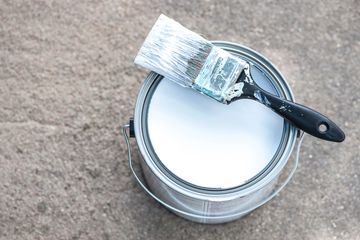Bathroom Paint In Humidity Areas

WHAT PAINT DO I
CHOOSE FOR MY BATHROOM MAKEOVER??
Want to give your bathroom or laundry room a makeover?
Painting is an inexpensive way to accomplish that task. So, what is stopping
you from painting? Let me guess it`s probably one of the most frequently
questions, I get from clients. What type of paint do I use for my bathroom?
Well if you are asking that same questions I have the answer for you. I`m going
to give you the tips to choose the best paint for your bathroom that will
resist water and mildew. When moisture soaks into the paint, this allows mildew
to grow. However, there are solutions that can be added to the paint to prevent
mildew growth. This chemical is called mildewcide. If you have a mold problem currently and you
are wanting to remove it and paint follow the process below. I follow the same
process before painting walls that already has paint.
How to
remove mold before painting
1.
Make sure the room is properly ventilated and follow
steps 2-4 until mold is removed.
2.
Make a solution of bleach and water –
usually 1 part bleach to 3 parts water.
3.
Using a stiff-bristled brush, scrub the molded areas.
4.
Rinse thoroughly and dry.
5.
A lot of work??? Now its time to apply
the paint.
Top Paints That Resist
Mildew
1.
Behr Premium Plus
Enamel
2.
Valspar Reserve
3.
Behr Premium Plus
Ultra
4.
Benjamin Moore
Aura
5.
Clark+Kensington
Enamel
6.
Behr Marquee
Just to mention a couple that don`t resist mildew are HGTV
Home by Sherwin-Williams, Ovation Glidden Premium, and Color Place
Interior.
Thank you for joining the blog
hope these tips help you with your next painting project.
Imperial
Home Improvement LLC



0 comments:
Post a Comment